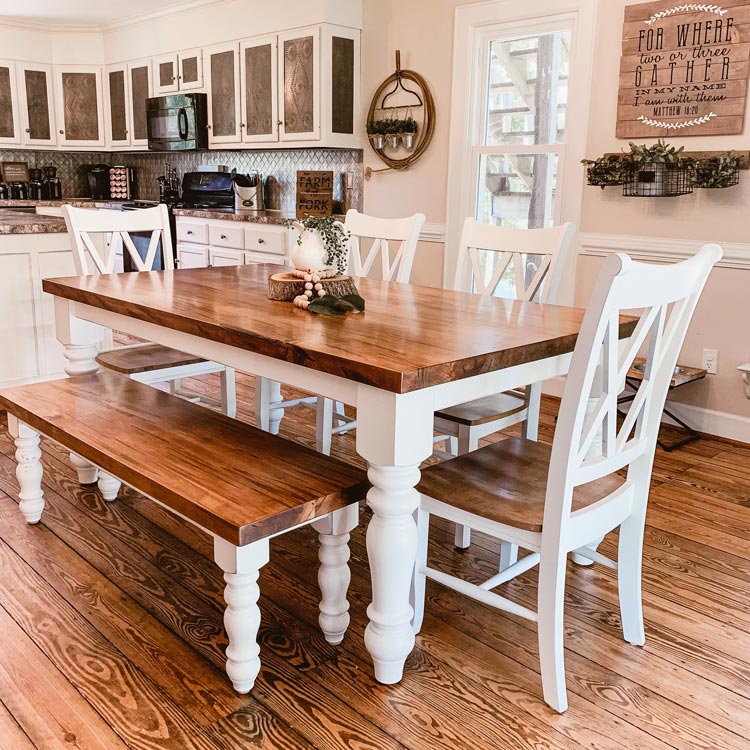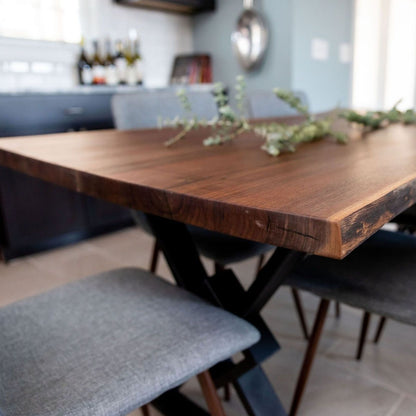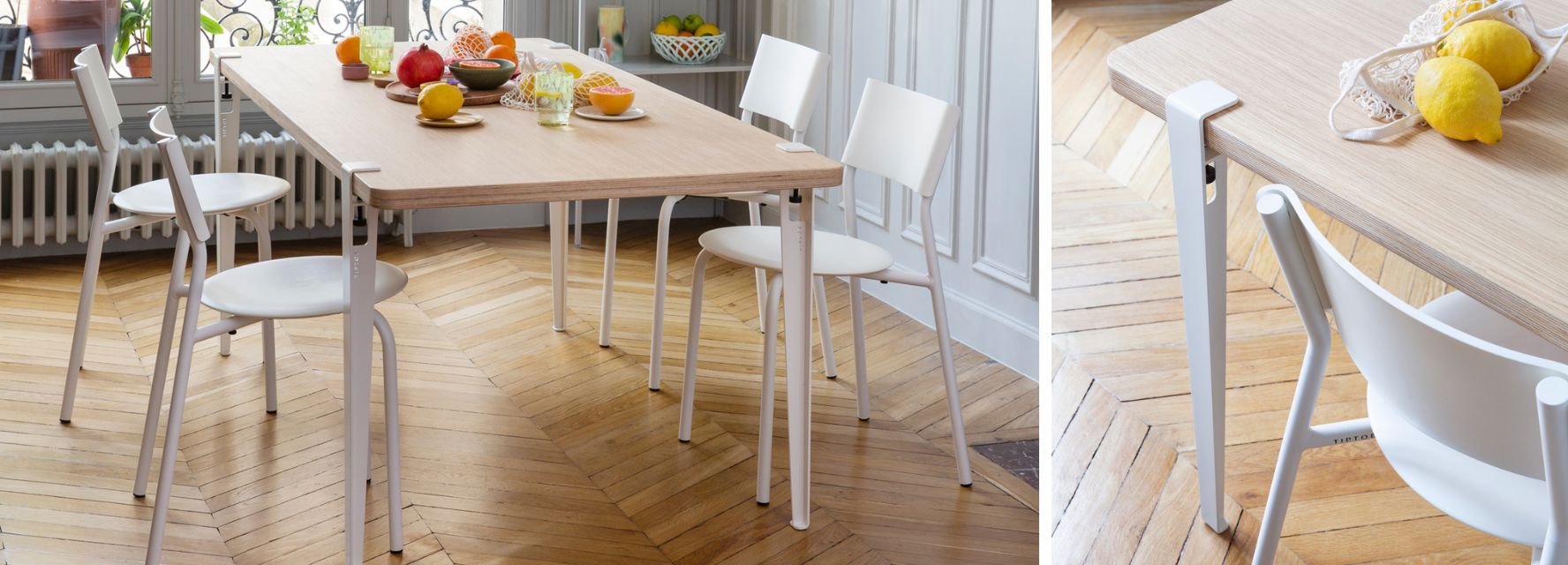The Top Trends in Dining Room Table Legs You Need to Know
The Top Trends in Dining Room Table Legs You Need to Know
Blog Article
Professional Tips for Setting Up Dining-room Table Legs for Optimum Security
When it involves mounting eating area table legs, attaining maximum stability is vital for both capability and appearances. The process begins with choosing the appropriate products and hardware, adhered to by thorough placement and factor to consider of weight distribution. Each action plays a critical function in ensuring that the finished product endures daily usage without jeopardizing safety or design honesty. Recognizing the subtleties of these aspects can dramatically influence the total end result. What certain techniques can enhance stability even further?
Choose the Right Legs
When choosing the ideal legs for your dining-room table, it is necessary to consider both performance and visual appeals. The legs you choose will considerably affect the total layout and security of the table. First, evaluate the table's planned usage; if you anticipate constant gatherings, stronger legs, such as those made from solid wood or steel, might be preferable, as they supply raised resilience and assistance.
Following, consider the elevation and design of the legs in connection with the tabletop. Standard dining tables usually vary from 28 to 30 inches in height, so guarantee the legs straighten with this standard for convenience. The design of the legs should complement the design of the table top-- whether it be contemporary, rustic, or conventional. Conical legs can include a modern touch, while transformed legs could convey a more timeless visual.

Select Appropriate Equipment
Just how can the best equipment enhance the stability and long life of your dining-room table? The choice of appropriate hardware is essential to making sure that the legs of your table are firmly attached and able to withstand normal use. Top notch screws, bolts, and braces provide the necessary toughness to sustain the weight of the table, along with any extra lots placed upon it during dishes or events.
When selecting screws, select those made from long lasting materials such as stainless-steel or brass, which resist rust and maintain honesty gradually. The size of the screws is just as crucial; they must pass through deeply right into the table's framework without endangering integrity. For bolted connections, consider utilizing lock washing machines to avoid loosening as a result of vibration or motion.
In addition, making use of corner brackets can include added support, specifically for larger tables or those with larger tops. These brackets disperse weight equally and assist preserve the table's shape. Guaranteeing that the equipment you pick is suitable for the specific products of your table will certainly even more boost its total stability and longevity, allowing you to enjoy your eating experience for years to find.
Ensure Correct Placement
Correct alignment of dining-room table legs is important for both aesthetic allure and functional security. Misaligned legs can bring about an unequal tabletop, which might not just be visually unappealing however likewise endanger the table's use. To attain optimum alignment, start by gauging the distance from the table's corners to the leg accessory points. This guarantees that each leg is positioned equidistant from the sides, developing a balanced appearance.
Make use of a degree during setup to verify that each leg is vertical to the tabletop. It is a good idea to note the preferred leg placements on the underside of the table with a pencil or masking tape prior to protecting them.
Additionally, double-check the positioning after the initial screws are tightened, as adjustments may be required before totally protecting the hardware. By prioritizing appropriate placement, you not only improve the table's total style however also guarantee that it stays steady and functional for several years ahead.

Consider Weight Circulation
After ensuring proper alignment of the dining-room table legs, it is essential to think about weight distribution to improve stability and functionality. dining room table legs. Appropriate weight distribution is crucial in avoiding wobbling and ensuring that the table can sustain its designated tons without threat of tipping or collapsing
When positioning the legs, guarantee they are positioned at equivalent ranges from the facility of the table to evenly distribute the weight across the framework. Consider the weight of the table top and any kind of items that will regularly rest on it, such as attractive pieces or tabletop appliances. Tables with heavier surfaces need to preferably have legs located closer to the edges, as this takes full advantage of the base of assistance and minimizes the risk of instability.
Furthermore, if the table is intended for use in a high-traffic area, consider using much heavier materials for the legs or adding stabilizing aspects, such as cross-bracing or a lower shelf - dining room table legs. These changes can aid preserve equilibrium and prevent shifting during use. Eventually, a well-considered weight circulation strategy will considerably improve the table's total performance, guaranteeing it remains a useful and appealing centerpiece for your eating space
Examination Security Prior To Usage
Testing the stability of the dining room table prior to usage is an important find more step that needs to not be overlooked. Ensuring that the table is steady and safe can stop mishaps and lengthen the life expectancy of the furnishings. Begin by applying mild pressure to different points on the table surface area. Push down on the center and after that along the edges, shifting or observing any kind of wobbling. If the table shows instability, identify the legs or joints that may need change.
Following, examine that all fasteners and screws are tightened up properly. Loosened links can bring about instability and possible damage in time. If necessary, make use of timber adhesive on joints to internet enhance stability, ensuring to enable adequate drying time.

Verdict
In conclusion, the installment of dining space table legs calls for cautious factor to consider of products, equipment, positioning, and weight distribution to attain optimum stability. By choosing top quality fasteners and sturdy legs, ensuring precise placement, and dispersing weight equally, the structural stability of the table can be considerably boosted. Performing a stability test prior to regular use better makes sure that the table will hold up against day-to-day pressures, thereby giving a safe and reputable eating experience.
When it comes to installing dining space table legs, attaining maximum security is extremely important for both functionality and aesthetic appeals. The legs you select will substantially impact the total design and security of click here for more info the table (dining room table legs). Typical eating tables usually vary from 28 to 30 inches in height, so guarantee the legs line up with this requirement for convenience.Correct placement of eating room table legs is important for both aesthetic allure and functional stability.In conclusion, the installation of eating area table legs needs mindful consideration of materials, placement, weight, and hardware distribution to achieve maximum stability
Report this page